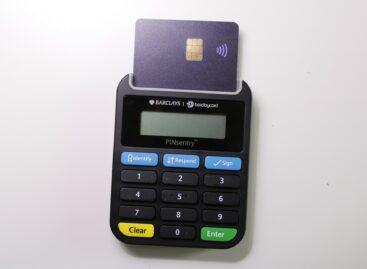Self-service checkouts have had a mixed reception in Hungary
According to a joint survey by the Pénzcentrum and the University of Debrecen, the vast majority of Hungarian customers have already used self-service cash registers, and many prefer them over traditional cash registers. 94.2% of the 10,358 people who took part in the research had used the self-service cash registers at least once, while only 5.8% stated that they had never tried them. Respondents explained the spread and popularity of self-service cash registers primarily in terms of speed, while others take a more critical position, including due to the lack of personal interaction.
Speed and flexibility are among the main advantages of self-service checkouts

According to the results of the research, the main advantage of using self-service checkouts is speeding up and simplifying shopping. 79.8% of the respondents believe that these systems are easily available in their shopping environment and are particularly suitable for carrying out purchases with a smaller basket value. Those who regularly use these systems highlighted the greater flexibility in addition to speed. Self-service checkouts allow customers to pay at their own pace without being rushed by a cashier.
In addition, 35.2% of the respondents stated that they are doing well using the self-service cash registers, while 55.1% generally do well, although they sometimes encounter minor problems. In addition to quick and easy shopping, another often-mentioned advantage is less queuing: at self-service checkouts, the queue is usually shorter, so the shopping process can be faster.
Criticism and challenges: not everyone likes it
Although the spread of self-service checkouts is becoming more widespread, not all customers are satisfied with them. According to 40.9% of those who took part in the research, there are already too many such systems and they feel that they are displacing traditional cash registers. This opinion is especially common among those over 40 and those with lower education. They cite the lack of personal interaction and technical difficulties as the main problems. For the older age group, for example, managing cash registers often causes frustration, and many people miss personal contact with cashiers.
Another common criticism is that when using self-service checkouts, customers are “doing the work of cashiers” without receiving any discounts or benefits. 27.3% of the respondents fully agreed with this statement, while 38.8% considered it partially true. Among these groups, lower income and older customers are mainly represented.
Related news
You can now pay utility bills with qvik
🎧 Hallgasd a cikket: Lejátszás Szünet Folytatás Leállítás Nyelv: Auto…
Read more >K&H: the phone has become the most practical Christmas payment method
🎧 Hallgasd a cikket: Lejátszás Szünet Folytatás Leállítás Nyelv: Auto…
Read more >This is how salaries will change in the future – an expert gave an opinion
🎧 Hallgasd a cikket: Lejátszás Szünet Folytatás Leállítás Nyelv: Auto…
Read more >Related news
How do young adults celebrate?
🎧 Hallgasd a cikket: Lejátszás Szünet Folytatás Leállítás Nyelv: Auto…
Read more >Vajda-Papír celebrates Ooops!’s 15th anniversary with a hybrid AI campaign
🎧 Hallgasd a cikket: Lejátszás Szünet Folytatás Leállítás Nyelv: Auto…
Read more >Pre-holiday shopping at up to half price
🎧 Hallgasd a cikket: Lejátszás Szünet Folytatás Leállítás Nyelv: Auto…
Read more >






